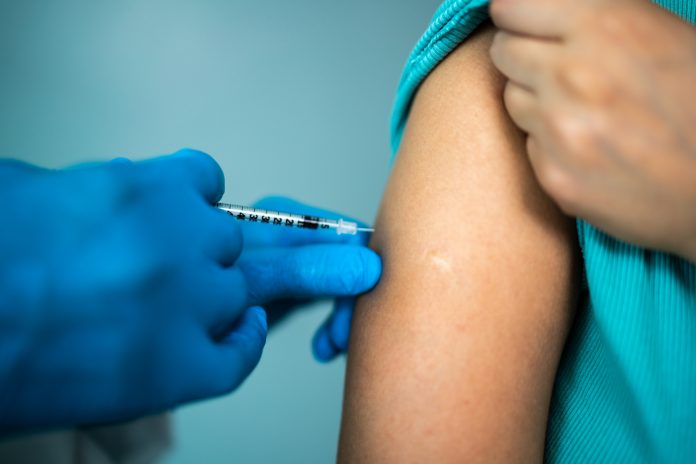Heidi J Larson, along with contributors from the Vaccine Confidence Project, discuss the complex factors influencing decision-making around vaccines and what can be done to improve public trust
Vaccines are a critical public health measure to mitigate the threat and severity of diseases. While we know how beneficial vaccines can be in protecting the public, many barriers and complex factors can prevent or make people hesitant about getting vaccinated. The COVID-19 pandemic highlighted the impact of vaccine hesitancy and misinformation as many sought information to address their concerns following rapid vaccine development.
According to a recent study conducted by the Vaccine Confidence Project at the London School of Hygiene & Tropical Medicine (LSHTM) and the Africa Centres for Disease Control and Prevention, in the past two years, Africa has seen the most significant sustained drop in routine childhood immunizations in three decades. Approximately six million children have missed getting vaccinated for preventable diseases like tetanus, polio, diphtheria, and measles. This worrying trend threatens to reverse decades of progress made against these diseases, leading to rising outbreaks in the region.
According to the CDC, vaccine confidence is the belief that vaccines ‘work’, ‘are safe’ and ‘are part of a trustworthy medical system,’ but what factors, vaccine- specific or otherwise, can influence people’s decision-making? To discuss this, we spoke to Heidi J Larson and her team at the Vaccine Confidence Project, an initiative set up to understand and map vaccine confidence globally.
What is the purpose of the Vaccine Confidence Project? How can concerns or hesitancy around vaccines be monitored and measured?
The Vaccine Confidence ProjectTM (VCP) was launched in 2010 at the London School of Hygiene & Tropical Medicine to establish systematic approaches to monitoring public confidence in vaccines around the world using population-based surveys, ongoing news and social media surveillance, as well as in-depth interviews and focus groups. This multifaceted approach helps us map vaccine sentiment and detect early warning signals of declining trust, while also exploring digital interventions through implementation science and experimental designs.
Since 2019, we have opened a European office at the University of Antwerp in Belgium and an Asia Pacific office at Hong Kong University, which leads on digital and AI innovation. The VCP developed the Vaccine Confidence IndexTM (VCI) to measure individual vaccine confidence in nationally representative surveys worldwide.
The VCI data informs national and subnational estimates of vaccine confidence that can be tracked over time and used to identify subpopulations with faltering confidence to inform policy and communication strategies. The VCP has published global studies comparing data from more than 140 countries from 2015 to the present, and these analyses have identified critical trends in confidence. (1,2)
Why is it important to shore up public confidence in vaccines, particularly during a global pandemic? Is misinformation a key factor in vaccine hesitancy, and how could this be addressed?
Over the past decade, we have learned that declines in vaccine confidence often flag broader trust issues – such as loss of trust in the health services or the government. Sometimes, prior negative experiences with the health system or feelings of being disrespected, marginalized, or stigmatized can inhibit people from returning to a health clinic. Historic bad experiences can also linger in the minds of individuals or communities and undermine their trust more broadly, which can be detected in declining trust in vaccines.
Once trends or signals of drops in confidence are identified, we then do deeper dives in trying to understand what is driving the change, initially contacting collaborators in the country or setting for their local insights and then working together to understand where the source of distrust is emanating from.
Sometimes, underlying online misinformation is less visible in the day-to-day running of the immunization programme and is coming from outside the health sphere. Another challenge is that some narratives are not explicitly misinformation but instead play on uncertainty and amplify the scale of real, albeit very small, risks – sometimes dramatically – to fuel fear. Attempting to directly rebut misinformation can serve to amplify it. As a result, public attention can shift from medical or government advice towards alternative explanations, which may be dangerous and can have negative health consequences, impacting how people process and act upon information.
One of the various strategies that is being used to mitigate the spread and negative impacts of misinformation is to surround the negative or inaccurate narrative with a better, more accurate and relatable story through other online groups or media – in other words, creating a media ecosystem that slows as well as undermines the plausibility of the emerging misinformation.
To better understand the dynamic nature of misinformation and consider ways to address it, the VCP at the LSHTM leads a research consortium called ‘IRIS’ committed to understanding infodemics, fostering healthy information ecosystems and developing a suite of solutions, insights, best practices, international standards, models, and training to counter online misinformation around vaccines. The other members include the University of Cambridge, Sapienza University of Rome, Ca’ Foscari University of Venice, City University of London, the Alan Turing Institute, and the Harvard T. H. Chan School of Public Health.
Existing research gives us an outline of some of the key factors influencing vaccine hesitancy, but we know that a one-size-fits-all strategy will not work, and public health approaches of the past cannot be relied on given the highly volatile current communication landscape and emboldened voices and demands from publics.
To successfully roll out vaccines during any pandemic, one needs to know who to target, with what messages, when and where. Most importantly, we need to have a deep understanding of what is driving public dissent, reluctance, or inability to vaccinate and how barriers (including susceptibility to misinformation) differ within and between countries.
The mpox outbreak was inconclusively connected to the LGBTQ + community; how can public health authorities ensure vaccine programs do not generate vaccine-related stigma?
Because the mpox outbreak appears to have disproportionately affected the LGBTQ+ community, mpox stigma started to emerge in the context of judgement around sexual orientation. This stigmatization further inhibited mpox vaccine-seeking behaviour. For issues such as these, vaccine programmes can help alleviate stigma, firstly by implementing a zero-tolerance policy around any stigma or discrimination expressed by healthcare professionals.
It is important to promote accurate data showing that mpox is not exclusive to the LGBTQ+ community, but can affect anyone. Finally, collaborating with LGBTQ+ communities will be key in the design of vaccination services to ensure they are accessible and reduce the risk of stigma.
References
- De Figueiredo, A., Simas, C., Karafillakis, E., Paterson, P. and Larson, H.J., 2020. Mapping global trends in vaccine confidence and investigating barriers to vaccine uptake: a large-scale retrospective temporal modelling study. The Lancet, 396(10255), pp.898-908.
- Larson, H.J., De Figueiredo, A., Xiahong, Z., Schulz, W.S., Verger, P., Johnston, I.G., Cook, A.R. and Jones, N.S., 2016. The state of vaccine confidence 2016: global insights through a 67-country survey. EBioMedicine, 12, pp.295-301.











